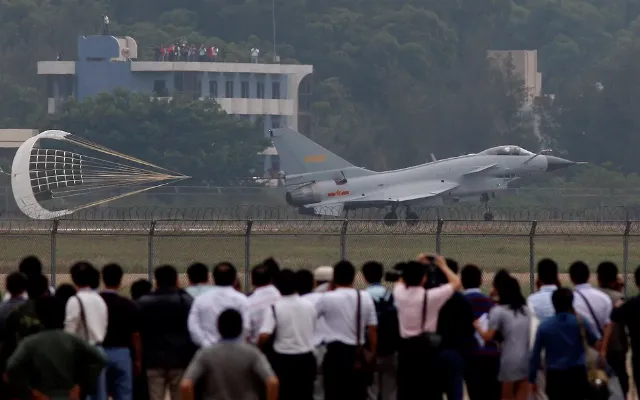Iran is considering buying a J-10C fighter jet from China instead of Russian planes
Immediately after the end of the 12-day war with Israel, the Iranian military intensified negotiations on the purchase of a batch of the export version of the Chinese J-10C fighter jets, Iranian media reported. Negotiations on their acquisition have been going on for almost two decades, but the parties could not agree on payment. Now that Israel's superiority in the skies has become apparent, Iran intends to equip its Air Force with new aircraft as soon as possible. According to the expert, the J-10C can solve this problem due to its cheapness and accessibility compared to the Russian MiG-35 and Su-35.
The Iranian newspaper Khorasan reported that Iran is once again considering the possibility of buying an export version of the J-10C, China's 4++ generation medium multirole fighter. In the same context, local experts assess the visit of the head of the Iranian defense Ministry, Brigadier General Aziz Nasirzadeh, to the SCO summit in the Chinese city of Qingdao.
China, which had vast energy reserves at that time, refused to barter oil and gas, while Iran was experiencing an acute shortage of foreign currency and could not afford such a deal. The situation was aggravated by the UN sanctions in force since 2010 on the purchase and sale of weapons to Iran. After the restrictions were lifted in October 2020, negotiations resumed, but although it was already about buying only 36 units, they were interrupted for the same reasons.
The J-10CE is a single—engine multirole fighter. It is positioned by Chinese developers as a more affordable alternative to the Western F-16V and Gripen E. The price per unit can range from $60 million (basic set) to $90 million (with spare parts, warranty, armament and pilot training).
According to Military Balance data for 2025, the Iranian Air Force had up to 150 serviceable fighters before the war with Israel. The vast majority of them are outdated American—made models inherited by the country during the time of Shah Pahlavi or acquired in the first years after the Islamic Revolution, including the F-4 Phantom II (64 units), F-5E/F Tiger II (35) and F-14A Tomcat (41), whose maintenance It was extremely difficult because of the sanctions.
In the absence of other options and due to the lack of funding for the armed forces, the main focus is on maintaining the functionality of the "flying relics", for which Iran has been able to manufacture the necessary aircraft parts. There are also up to 18 MiG-29A/UB in service (delivered in the late 1980s and early 1990s), but most of them have lost their combat capability due to the lack of spare parts and the complexity of maintenance. An attempt to modernize the fleet through the purchase of Su-30SK aircraft from Russia (a 2016 contract for 24 units) was thwarted due to sanctions, and it did not come to deliveries.
And after the United States allowed China to officially buy oil from Iran on June 24 without the threat of sanctions, Tehran had an additional trump card for new negotiations on the supply of aircraft through oil barter. At the same time, China is still the main unofficial importer of Iranian oil: according to Kpler, small private Chinese oil refineries account for 77% of Iran's exports (1.27 million barrels per day).
The last foreign fighters received by the Iranian Air Force were Russian heavy twin-engine multirole fighters of the 4++ generation Su-35, delivered in up to four units under a 2023 contract. But given the ongoing special operation in Ukraine and the transfer of Russian defense industry production facilities to domestic demand, Iranian pilots are unlikely to receive all 50 ordered aircraft at least in the next couple of years.
According to Ilya Kramnik, a researcher at the IMEMO RAS Center for Strategic Planning Studies, even taking into account Russian heavy fighters, Iran still needs an extensive fleet of up to 400 aircraft, and the Chinese medium-light J-10CE can close this gap. "By definition, the expensive Su-35 cannot be numerous, and the more affordable J-10C can be purchased in much larger quantities. And, in fact, now this is the only option that the Iranians have: no one will sell them a Western fighter," the expert explains. In his opinion, the Russian MiG-35 light fighter, the result of a deep modernization of the MiG—29M/M2, could be suitable for this role, but it is not currently being mass-produced.
Dmitry Sotak


